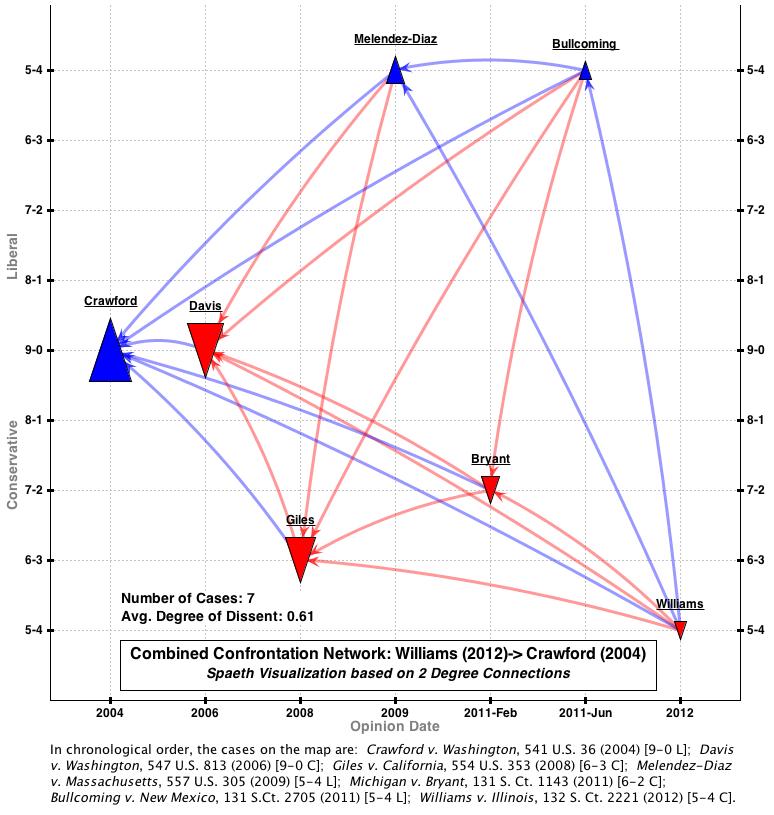After a brief “True Threats” interruption, we return today to Confrontation Clause doctrine since Crawford v. Washington. In my last post in this series, I argued that 2008’s Indiana v. Edwards does not really belong in the Crawford network (even though it was picked up by the citation algorithm) and that 2007’s Whorton v. Bockting is similarly unimportant to current Crawford doctrine since Whorton concerned only the narrow issue of retroactivity. Let’s look now at an edited version of the last Crawford map (click for full-size version with links to opinions):
This map employs a Spaeth visualization schema — the Y-axis represents Supreme Court Database codes on majority outcome vote and decision direction. (For more on Spaeth visualization, see this post and/or this video). The scheme displays cases with a high degree of outcome consensus in the middle of the map — 9-0 judgments like Crawford and Davis. Conversely, cases with less consensus are displayed at the top (Spaeth-coded liberal) and bottom (Spaeth-coded conservative) of the map.
After Crawford and Davis, we see that decisions in this line have invariably provoked dissent. How much dissent? Let the “Degree of Dissent” of a case be #Number_of_dissents * 0.25. This means a case with no dissents has a degree of dissent of 0. A case with four dissents — the most possible in SCOTUS — has a degree of dissent of 1. The Crawford network’s average degree of dissent is 0.61, somewhere between a 7-2 (0.5) and a 6-3 (0.75). After Davis, however, the degree of dissent is 0.85 — between a 6-3 and a 5-4.
This map thus shows that the early consensus around Crawford has fallen apart. Understanding just how this fragmentation occurred requires looking closer at the competing lines of doctrinal interpretation. That requires yet another kind of map. Coming soon…

